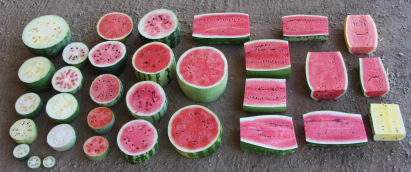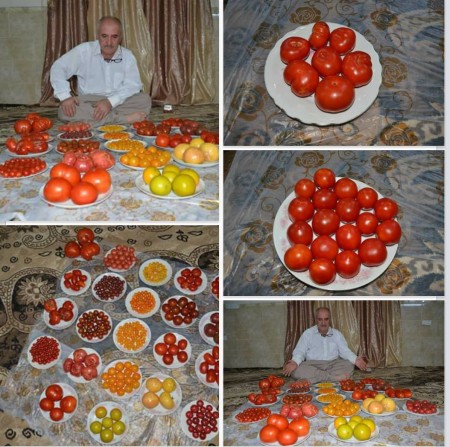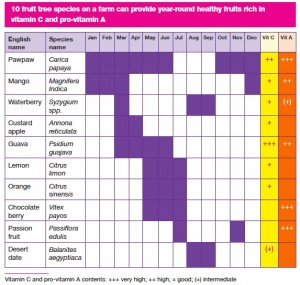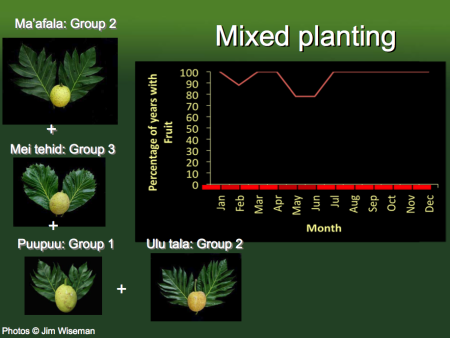- Chloroplast heterogeneity and historical admixture within the genus Malus. Three genetic networks within the genus, with the cultivated species in one of them.
- Subgenomic Diversity Patterns Caused by Directional Selection in Bread Wheat Gene Pools. Five subpopulations, dividing the European from the Chinese material. Some parts of the genome more in need of diversity than others.
- Biodiversity of Lactuca aculeata germplasm assessed by SSR and AFLP markers, and resistance variation to Bremia lactucae. Some race-specific resistance in the wild relative in Israel-Jordan, but nothing extraordinarily efficient.
- Using Multi-Objective Artificial Immune Systems to Find Core Collections Based on Molecular Markers. Very fancy math not only picks populations to maximise diversity, but also potentially at the same time minimises distance from the office.
- Assessment of ISSR based molecular genetic diversity of Hassawi rice in Saudi Arabia. It’s not just one thing.
- Minor Millets as a Central Element for Sustainably Enhanced Incomes, Empowerment, and Nutrition in Rural India. Holistic mainstreaming pays dividends.
- Minimum required number of specimen records to develop accurate species distribution models. Depends on prevalance, but 15 is a good rule of thumb.
- Microsatellite Analysis of Museum Specimens Reveals Historical Differences in Genetic Diversity between Declining and More Stable Bombus Species. Species which declined less diverse than species which did not.
Nibbles: Conservation genetics, African fish farming, Ecological intensification, Elderly diets, Organic breeding, Conference tweeting, Mexican maguey, African PBR
- Conservation genetics papers from Latin America, courtesy of special issue of the Journal of Heredity. No ag, but no problem.
- African aquaculture takes off. Or perhaps rises to the surface would be more appropriate.
- Expert parses what experts said “sustainable intensification” means.
- Leafy greens and wine good for oldies. Good to know.
- Student Organic Seed Symposium to discuss “Growing the Organic Seed Spectrum: A Community Approach” in a few days’ time.
- How to tweet. At scientific conferences, that is.
- Maguey genebank in the offing. Well worth tweeting about.
- Arusha Protocol on the Protection of New Plant Varieties (Plant Breeders’ Rights) adopted. Basically UPOV 1999 for Africa. But I suspect the polemics are only just starting.
Phenological diversity for nutrition
A recent blog post by the World Agroforestry Centre described their idea of a phenologically varied “fruit tree portfolio” to provide nutrition throughout the year. In Machakos, Kenya, where the portfolio is being tested out, these would be the species involved, a mixture of the local and the exotic:
A nice idea, and it reminded me that you can also do something similar by exploiting within-species diversity in seasonality. The example I know best comes from Diane Ragone’s work on breadfruit. This is from a presentation she gave recently at USAID.
Planting multiple varieties carefully chosen from each of these different groups means you can count on having some fruit throughout the year, most years. Great to have diversity at multiple levels to play around with.
Agrobiodiversity illustrated then and now
There really is nothing like photos of agricultural biodiversity to set the pulse racing. Well, at least in our weird little corner of cyberspace. It’s been crazy over on Twitter and Facebook, what with frenzied sharing of, and commenting on, a couple of stories about, of all things, watermelons. Well, it is summer, I guess: they don’t call it the silly season for nothing.
To recap for those who do not follow us on other media, ((And why don’t you?)) people seem to have really been impressed by the photos which accompanied a story on the sequencing of the watermelon genome. Although it dates back to three years ago, for some reason it resurfaced again last week.

It may well have been resurrected because of a Vox.com story on how James Nienhuis, a horticulture professor at the University of Wisconsin, is using Renaissance paintings of watermelons and other produce to illustrate the changes that have been wrought by modern plant breeding. The story was later taken up by others, and bounced around a lot. And all long before National Watermelon Day. And also before the AoB post on watermelon origins.
Well, let me add to the hysteria. Courtesy of my friend Dr Yawooz Adham, here’s another fantastic agrobiodiversity photo, of tomatoes this time.

The farmer’s name is Shiek Jamally Karbanchi ((He’s on Facebook!)) and he lives in a village near the town of Chamchamal, between Kirkuk and Sulaymaniyah in Iraqi Kurdistan. He tends 22 different tomato varieties, and is clearly incredibly proud of them. Though I’m pretty sure he doesn’t charge Euros 20 each for them. I don’t know if they’re all commercial varieties or whether there’s a few local heirlooms in there, but either way it’s damn impressive.
Nibbles: Summer holidays, Tajik bread, Farm to pizza, Västerbottensost, Diverse bananas, Banana wine, Chinese agroforestry, Peak coffee, Responsible oil palm, Model chickens, Damn you NS
- Ah, summer and its funny medieval holidays.
- Making bread in Tajikistan.
- Making pizza in Sussex.
- Making cheese in (one village in) Sweden.
- Diversifying bananas in Queensland.
- Diversifying banana products in Kenya.
- Diversifying with trees in China.
- Better diversify coffee.
- I see your responsible soy and raise you responsible oil palm.
- Cocks of the walk.
- I’m so annoyed the New Scientist article on breeding less bitter veggies is behind a paywall that I won’t even link to it. Google it, if you must.


